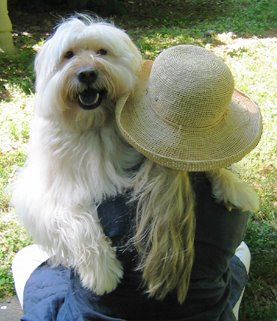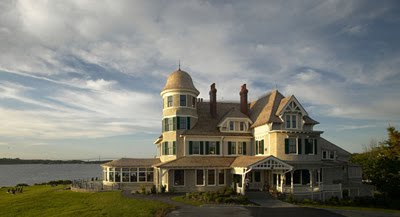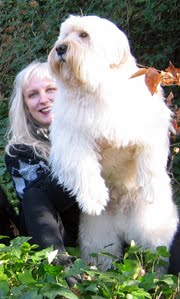Monk’s House
The elm trees are gone now. I stand where they once stood, imagining the two graceful giants, their limbs once intertwined, their leaves once freely dancing in the winds blowing up from the South Downs. They were named for their owners and valiantly kept the charge of guarding their ashes for as long as they could, till the cruelty of time and disease felled them, first one, then the other. But those careless thieves could not vanquish the two great minds whose ashes seem to have carried their essences deep into the very ground of this garden through which I wander. Her spirit is everywhere here. A healthy spirit, too, one gifted for recognizing beauty and attempting to illuminate it for the rest of us, in spite of the pain, in spite of the fear. It is a lovely garden. I feel she is happy here now.
It is a storybook day in May when I stroll the lane towards Monk’s House, the home of Virginia and Leonard Woolf in the bucolic village of Rodmell. The lane seems shy, indeed it only bears the nondescript name, The Street, as if anything grander would be unseemly. Candybox houses hide behind flowering fruit trees and the suede of spring-green moss softens the stone walls lining my way. I lift the latch on the humble wooden gate and follow the path into the garden.
It is blissful here. Fat, lazy bumblebees dip and sway around me. An alchemistic sun turns the white apple blossoms into celestial clusters of light. A few break free and drift my way to land in my palm like a blessing. Ever-vigilant, the sturdy square tower of St. Peter’s parish church casts a benevolent eye over all, morning prayers floating on the breeze, wafting through the pink roses that still clamber round her bedroom door. Did she ever stand in their shadow to listen? To stand where she stood, to step over her threshold. To run my hands across the fabric of her favourite chair. I know how fortunate I am.
People often tell me they find her books difficult. It’s true, Virginia Woolf’s writing is dense; it cannot be read casually. But if it seems impenetrable at first glance, one needs only to find a way in. Perhaps in the middle of a brilliantly lucid rendering of emotion that is at once intimate and universal, there are two or three words to pull apart, just wide enough for the soul to sink inside the illuminating prose and float down, down, to the core of its meaning. A light shines there, in the midst of her words, perhaps only flickering at first reading, but growing brighter and brighter with each subsequent one till it is possible to see the deepest workings of the heart, shimmering in the darkness.
Unable to bear another war, unable to quell her fear of sinking once again beneath the weight of another grave depression, Virginia Woolf opened her garden gate on a morning in March 1941, and walked down the lane to the river Ouse, picking up heavy stones as she went. These she placed in the pockets of her cardigan, laid down her cane and hat on the banks of the river, and sank beneath its waters. For years I have wondered about the solemn determination of that walk and as I lift the same latch as she and turn right to follow in her footsteps, I am struck by the beauty of the scenery around me. The lane meanders past fields abuzz with the business of Spring; magpies swoop past me on the the currents of the wind. Everything is green. How deep her desperation must have been to deny her the tiniest, lifesaving measure of hope in this scene that met her eyes as she took that final walk, gathering sad stones along the way. Suddenly, I find I cannot go any further. Her last steps I no longer wish to retrace.
The elm trees are gone, it’s true. But there is a chestnut tree, resplendent in its big-leafed Springness, still standing watch over her writing studio in the bottom of her garden. Before I leave, I gather up eight perfect leaves from that old tree, placing them in a copy of Mrs. Dalloway that I purchase at the shop. They dry perfectly by the time I return home and I frame them to hang in my library.
I gaze at these leaves often; emissaries from the same tree that she gazed upon as she wrote the books that mean so much to me. Having visited her home, I no longer think of her on that walk to the river. For me, she lives in that spring garden, peaceful now amidst its beauty. I smile.
“Beauty, the world seemed to say. And as if to prove it (scientifically) wherever he looked at the houses, at the railings, at the antelopes stretching over the palings, beauty sprang instantly. To watch a leaf quivering in the rush of air was an exquisite joy. Up in the sky swallows swooping, swerving, flinging themselves in and out, round and round, yet always with perfect control as if elastics held them; and the flies rising and falling; and the sun spotting now this leaf, now that, in mockery, dazzling it with soft gold in pure good temper; and now again some chime (it might be a motor horn) tinkling divinely on the grass stalks—all of this, calm and reasonable as it was, made out of ordinary things as it was, was the truth now; beauty, that was the truth now. Beauty was everywhere.”







































Thank you Pamela for recounting your pilgrimage. I think I understand Virginia's last walk, depression and the vibrant and surpassing beauty of spring, couple with the terrors of the war, can do that to one. I have suffered depression and the overwhelming beauty of spring when I have wanted to hide from the awesomeness lest I lose my mind, like the six year old me contemplating the stars and universe and what is beyond all that.
ReplyDeleteThak you again for your beautiful writing . . .
As always Pamela, beautifully written with caring insightfulness.
ReplyDeleteI long to visit Monk's House, but I always hold back, because I don't want to destroy my mental image created by Virginia's diaries. Which I re-read regularly.
ReplyDeleteGreat work Pamela...It reminds us the pilgrims that is really loving...
ReplyDeleteMrs Dalloway is one of my favourite books Pamela - when anyone mentions Virgina Woolf it is the first thing I think of. I hjave always thought that perhaps she thought too much - on some topics I think it is best not to delve too deeply. Interestingly the word verification below is treemil.
ReplyDeleteBeautifully composed.
ReplyDeleteI loved that you took us on your visit. xxpeggybraswelldesign.com
ReplyDeleteI find that final walk unimaginable from one who so appreciated beauty. But then we can never really understand the depths of another's pain. Lovely homage you pay her.
ReplyDeleteI was just there, two weeks ago at Monk's House and I am still absorbing the impact of the experience. To visit the home of my favorite writer was a dream come true. I was touched by the humble nature of the house and its furnishings. It all made sense. What was important was the garden (for Leonard) and the writing hut ( for Virginia). A room of her own. I could sense their spirit and imagine the conversations and creative work that went on in this lovely house. The green sitting room was beautiful and I loved her bedroom. So glad you were able to visit!
ReplyDeletexx Sunday
I knew that Virginia Woolf had committed suicide, but I never knew how. What a terrible, tragic story, the more so, somehow, for having taken place in such a verdant, idyllic location.
ReplyDeleteBeautifully told.
Cheers, Gail.
As part of an on-line course for Barnard alumnae a few months ago, I read Mrs. Dalloway. At first, as you say, it was difficult; but then the words did open intimate worlds and I was entranced. How lovely that you could visit her home and bring to it all of your care for her writing and passions.
ReplyDeleteJoan
Hi Pamela,
ReplyDeleteI loved this post so much, I referenced it in my new post. I hope you like it if you have time to check it out.
Michelle Raymond
http://thecentrichome.blogspot.com/2013/10/bohemian-101.html
Your description is very poetic; oh to fill her pockets with stones and walk into the water. And better to remember her with the quote from her beautiful words.
ReplyDeleteWonderfully evocative writing Pamela, always written from the soul. How I envy you your visit to Monk House! How fantastic that you have the leaves framed that is something I too would have done.
ReplyDeleteVirginia's writing is brilliant and she remains one of my favourite authors.
Jane x
Such a thoughtful post.
ReplyDeleteI'm sending you an email with details of a super Sussex artist who paints in Lewes.I remember hanging over the gate of Monk's house circa 1970 -long before it was open to the public.
I would love to go inside.
Hope the SongWriter is improving?
Your simple act of keeping the leaves, I suspect, will from now on enrich you.
ReplyDeletePamela, you might be interested in a new book just out on Virginia Woolf and Music, by an academic at the University of St Andrews:
ReplyDeletehttp://www.st-andrews.ac.uk/news/archive/2013/title,228885,en.php
Hello Pamela
ReplyDeleteYou respectfully made your pilgrimage to Monk house and you homage to the great writer is soul touching. It is as if you have buried her with dignity and grace.
I love all I have read of Virginia Woolf. To the Lighhouse remains my favourite.
Helen xx
A beautiful rendering of your visit Pamela. I am touched by the thought of you collecting leaves form the garden to bring home amongst the pages of Mrs Dalloway, a gorgeous tribute.
ReplyDeletePaul
Your blog has made me want to know more about Virginia Woolf and her group. I found on Amazon a book "From the Lighthouse to Monk's House" by Katherine Hill-Miller. It gave me more ideas to explore in London and beyond. Then a book that I already have, "Perfect English Cottage" by Ros Byan Shaw has a picture of Monk House on the cover and more inside. So charming. Thanks for all your inspirations.
ReplyDeleteI am ashamed to say that I have never visited Monk's House but you have inspired me to next time I am down that way.
ReplyDeletePamela..I am so glad that you visited Monk House and wrote to tell us about it. I imagined as I read that you sat somewhere quiet and wrote your words...I feel like I was right there next to you, looking about. You reminded me about a book of her's "A Room of One's Own. When we lived in England, I kept it in my purse for the train ride in and out of London. It was the perfect size but what I enjoyed most of all is that I could read a single passage over and over again and still draw something new from it. You are right, you have to read her work slowly and deeply. You also have to be of a mind to do just that. Virginia Woolf did not create 'quick reads'.
ReplyDeleteThank you for the lovely memory..I needed that! xx